These Are Europe’s Coolest Neighbourhoods

London, Rome, Paris, Barcelona, Copenhagen and Venice. These are the big-ticket destinations: cities that every traveller dreams of visiting.
But while dreams are free, reality can often come with a hefty price tag. Thankfully, you don’t need to splash out too much to have a good time. Beyond the pricey, tourist-packed centres lie charming enclaves that offer far greater bang for your buck and reflect the true character of a city. With thriving food and drinks scenes, plus affordable accommodation options, these hidden gems are where the locals hang out. They’re also a convenient train ride, bus journey or walk from the central hubs and major visitor attractions so you’ll enjoy the best of both worlds.
Parc Monceau, Paris
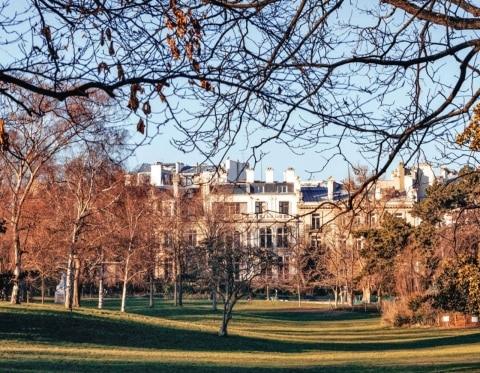
Tucked away in the eighth arrondissement, just north of the Champs-Élysées, Parc Monceau is an idyllic green pocket of the French capital and a favourite of the city’s well-to-do. (Claude Monet depicted its beauty in a series of paintings in the 1870s.) The eight-hectare retreat is surrounded by quiet streets with Belle Époque-era mansions and Haussmannian apartments – the limestone buildings that shot up across Paris in the mid-19th century, designed by urban planner Georges-Eugène Haussmann. Some now house museums and galleries but you’ll also find brasseries, boulangeries, bistros and Airbnbs – from snug studio apartments to spacious duplexes (expect high ceilings, polished timber floors and wrought-iron balconies).
For the best transport links, stay on the park’s north side as there are several métro stations nearby – it’s a 15-minute ride from Monceau to Bir-Hakeim, the closest stop to the Eiffel Tower. To the east, tree-lined Boulevard Malesherbes offers bustle with swanky wining and dining options, including Miam (pictured below) serving classic French fare as well as imaginative dishes such as lamb with chocolate sauce and sweet potato mash. You might also be tempted by the macarons at gourmet patisserie Pierre Hermé.
Cannaregio, Venice
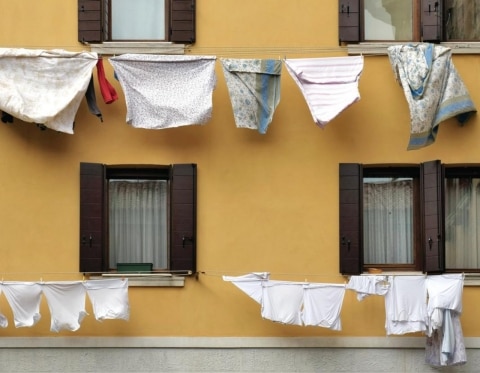
One of the current myths about Venice is that all the Venetians have moved out, leaving the city exclusively for tourists. While the population has declined, there are still about 55,000 permanent residents in the historic city core – and you’ll find plenty of them living, working and enjoying cicchetti (Venetian tapas) in Cannaregio, one of the city’s six sestieri (districts). Occupying the cluster of islands in Venice’s north, the neighbourhood is sliced with canals and knitted together by footbridges. Airbnbs in pastel-hued buildings look out on the water near Campo di Ghetto Nuovo – a square that has been the spiritual heart of the area’s Jewish community for more than 500 years.
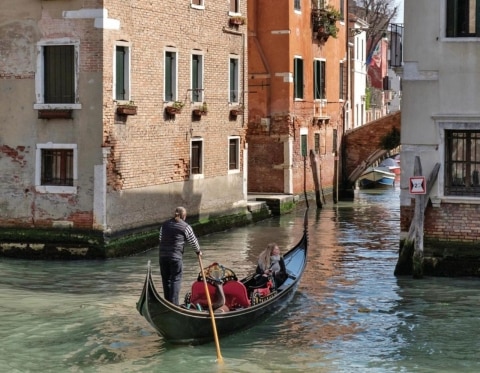
Wander the car-free lanes and you’ll stumble across everything from bohemian wine bars to kosher bakeries. Savour snacks and Sundowners at Al Timon, a canal-side spot that also does gigantic steaks. Basing yourself here means you’re well set for sightseeing as Piazza San Marco is less than 30 minutes away on foot. You can also get there on the vaporetti (waterbuses) that whiz along the Grand Canal, boarding from the San Marcuola stop on Cannaregio’s southern limits.
Østerbro, Copenhagen

Copenhagen is frequently ranked among the world’s most liveable cities and it’s thanks in no small part to neighbourhoods like Østerbro. In this upscale, park-dotted slice of the Danish capital you’ll see fashionable locals shopping and browsing in chic designer stores, enjoying Michelin-starred dining and snuggling up in cafés and bars with a significant hygge factor. Pronounced “hoo-gah”, hygge is a Danish word that describes creating a warm, convivial atmosphere where friends and families can hang out, eat and drink. For a unique dining experience try Gro Spiseri (pictured below), where organic local produce is served in a greenhouse on a rooftop laden with vegetables, herbs and flowers.
SEE ALSO: 20 of the Prettiest European Towns
Typically bright, airy and kitted out with sleek Danish furniture, Østerbro’s best Airbnbs are located in the streets east of Østerbrogade, the district’s broad 2.2-kilometre thoroughfare, and are within walking distance of Nordhavn Station, a 10-minute train ride to Copenhagen Central Station. Buses also run into the city along Østerbrogade and there are several bike hire shops in the area should you choose to pedal. And why not? Copenhagen has more than 450 kilometres of cycle paths, beating Amsterdam as the most bicycle-friendly city on the planet.
Islington, London
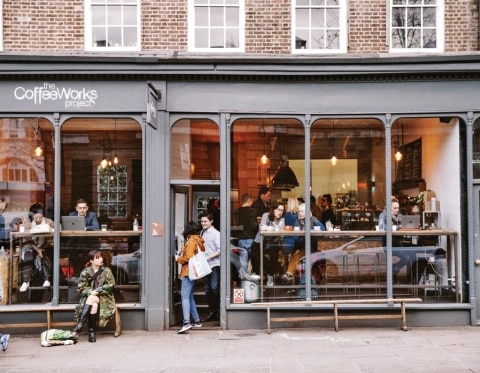
About four kilometres north of Trafalgar Square – the official centre of London – Islington blends urban buzz with the charm of English village life. You’ll discover leafy squares and handsome Georgian and Victorian houses, some of which have been converted into stylish apartments. There are plenty of Airbnb choices throughout the web of tranquil backstreets between Regent’s Canal, a waterway that crosses the borough, and Islington’s most happening thoroughfare, Upper Street. This 1.5-kilometre stretch has many cosmopolitan establishments where you can eat, drink, shop and socialise, from gastropubs and Sunday roast specialists like The Bull to inventive restaurants such as Oldroyd, where the shared plates feature a medley of Mediterranean influences and ingredients.
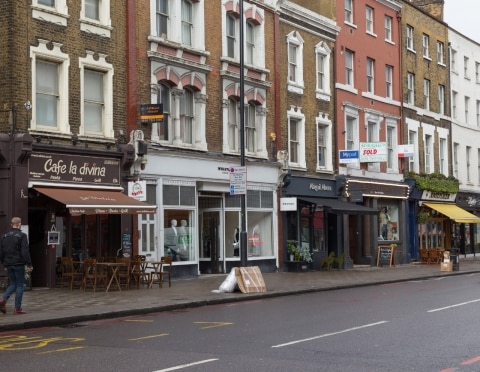
Islingtonites also have excellent entertainment at their doorstep, including the King’s Head Theatre Pub, which was a stepping stone for actors such as Hugh Grant and Alan Rickman. Enjoy live comedy, music and drama with a pint beside a crackling fire. The suburb has superb transport links to central London sites. Humming 24/7 with black cabs, red double-decker buses and Ubers, Upper Street also has two Tube stations: Angel and Highbury & Islington. From the latter, you can zip to Oxford Circus – a springboard to the West End – in only 10 minutes.
Monti, Rome
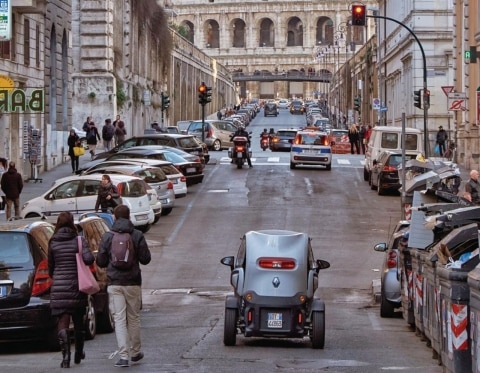
Residents of Monti often claim their rione (neighbourhood) is “hidden in plain sight” – and they have a point. Despite its prime location wedged between the Colosseum and Rome’s main railway station, Termini, it barely registers on most travellers’ radars. Once a notorious red-light district, Monti has been cleaned up and gentrified and now everyone from artists and fashionistas to old-school nonnas and nonnos call this hip area home. Hilly cobblestone streets are flush with ivy-draped walls and timber-shuttered apartments, some of which are prize Airbnbs (search for options that are near the Baroque Santa Maria ai Monti church).
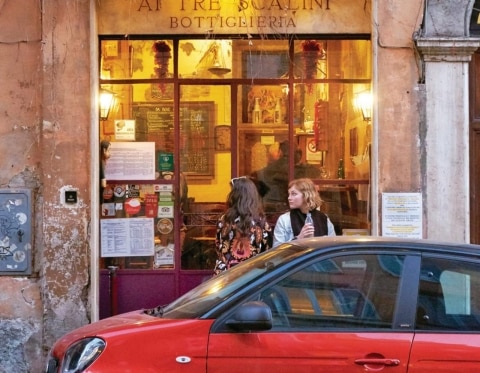
Stroll around to find designer boutiques, vintage stores and alfresco bars and eateries, their tables jostling for real estate on the narrow footpaths. Rub shoulders with local characters sipping espresso or gathering over aperitivo – happy hour Spritz and snacks – or dine on traditional Roman dishes including cacio e pepe tartufato at family-run La Taverna dei Fori Imperiali. Alternatively, enjoy takeaway pizza or gelato by the fountain at Piazza della Madonna dei Monti, where residents love to sit and chat as they watch the world go by. From Monti, you can walk to most notable sites, though for Vatican City it’s best to hop on a train from Cavour metro station (the journey takes about 30 minutes all up).
Gràcia, Barcelona
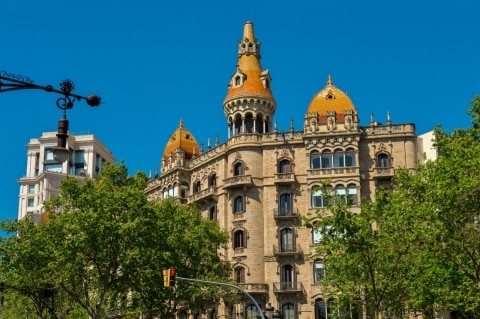
Once an independent town in the hills north of Barcelona, Gràcia was absorbed into the expanding Catalan capital in 1897 and has evolved into one of its hippest, most liveable barrios (districts). Home to eye-catching late-19th-century Modernist architecture – with decorative tiled façades and flamboyant turrets – Gràcia is also dotted with markets, florists, bodegas, bars and jazz clubs that spill out onto tightly packed streets and tree-studded plazas that are as lively at night as they are by day.
The quarter has heaps of Airbnbs, with ample choices in the chilled-out side streets off scooter-strewn Carrer del Torrent de les Flors. Half-a-dozen metro stops mean you’re well connected to the rest of the city. A 10-minute subway ride could take you to the Gothic Quarter – the tourist heart of the city – or to La Sagrada Familia, Antoni Gaudí’s iconic unfinished cathedral. Gaudí fans should also explore Parc Güell. Adorned with sculptures and mosaics by the Catalan genius, this hilltop gem nestles north of Travessera de Dalt, a busy road that snakes through the heart of Gràcia.


